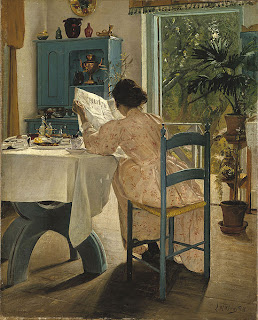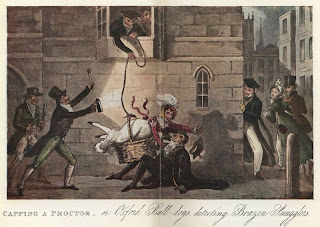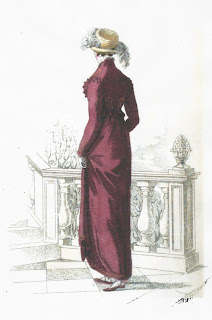Susan reporting:
We've written before on the
Foundling Hospital, London, a remarkable charitable institution founded in 1741for the "Education and Maintenance of Exposed and Deserted Young Children." The Hospital continued to do exactly that well into the 20th c., taking in and providing for unwanted children, and teaching them a trade to support themselves.
Desperate mothers in the 18th c. turned to the hospital as a last resort, the one sure way to offer their children a better life than they could provide. When the child was offered for admission, a small token was left as well to be used for future identification, the hope being that the mother's circumstances would improve so that she could return and reclaim her child. Alas, few did. Today the tokens are among the most moving pieces in the Hospital Museum's collections.
Last year, the exhibition
Threads of Feeling highlighted the textile tokens - ribbons, sleeves, and snippets of cloth - taken from the foundlings' clothing. (Click
here for a heartbreaking slideshow of this exhibition.) Now the Museum has published a new book,
An Introduction to the Tokens at the Foundling Museum, above left, that features many of the other tokens as well as several of the textile ones. These include coins, paper hearts, baby-sized rings, gambling markers, thimbles, keys, even admission tickets to Vauxhall Gardens; several are shown here, and on the book's cover. It's a fascinating collection of what lower-class Londoners held dear in the 18th c, and what they believed would link them forever to the children they had to give up. There's also a brief history of how the tokens were used in the 18th c., and how they were rediscovered and exhibited in the late 19th c.
But the true heart of this small book are the stories behind the tokens. Some have happy endings, of foundlings restored to their mothers, or growing to independent, responsible adulthood. Others are simply heartbreaking, and hint at the desperation and poverty that too many London women faced each day.
Margaret Larney's story is told in a simple letter that served as a token. Margaret and her husband came from Dublin to London to improve their fortunes. But after a series of menial jobs, Margaret became involved with a group who shaved gold sovereigns. She was arrested and tried for "degrading the coin of the realm," a crime that was considered high treason and punishable by execution. Although Margaret protested her innocence, she was convicted. While she was in prison, her husband disappeared, and her older son was taken and admitted to the Foundling Hospital. Because Margaret was pregnant, her execution was postponed until she gave birth, and then that son, too, was sent to the Hospital. In the letter,
lower right, (which she must have dictated) that accompanied the newborn, she begged that the two brothers would be permitted to know one another:
Dear Sir
I am the unfortunate Woman that lies under Sentence of Death at Newgatt. I had a Child put in here before when I was sent here his name is James Larney and this [second son] his name is John Larney and he was born the King's Coronation Day 1758. And Dear Sir I beg for the tender mercy of God to let them Know one and other for Dear Sir I hear that you are a very good gentleman and God's blessing and more be on you for ever
Sir I am your humbel
Servant Margaret Larney
It's doubtful her final wish was fulfilled. The baby born in Newgate Prison died soon after admission, and soon, too, after Margaret herself was executed at Tyburn by strangulation and burning. But the older boy - renamed George Millett - survived, and became a successful wigmaker in Shropshire: the kind of happy ending that the founders of the Hospital hoped for all their charges.
An Introduction to the Tokens at the Foundling Museum is available
here through the Museum's shop in London. Our American readers can also order the book stateside through our friends at
Burnley & Trowbridge here.
All images are from the book, and are used with permission of the Foundling Museum. In accordance with the FTC (a rule that probably doesn't apply to Loretta and me since we're writers, not reviewers, but never mind) I received this book as a gift from the Museum.






























 One of us --
One of us -- 


